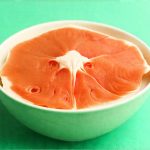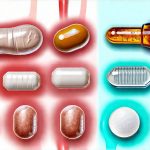Living with bladder sensitivity – whether due to Interstitial Cystic Disease (IC), overactive bladder syndrome, or other sensitivities – can significantly impact daily life. Many individuals find that certain foods and drinks exacerbate their symptoms, leading to urgency, frequency, pain, and discomfort. While there’s no one-size-fits-all diet for bladder health, adopting restorative eating plans during flare-ups or “sensitive days” can be a powerful tool in managing these challenges. These aren’t about strict elimination diets; instead, they focus on temporary dietary adjustments designed to soothe the bladder and reduce irritation. The goal is to provide relief while identifying potential triggers over time and building a long-term eating strategy that supports overall wellbeing.
Restorative eating isn’t simply about avoiding irritating foods. It encompasses a more holistic approach – prioritizing gentle digestion, hydration, and nutrient density. It’s about listening closely to your body and recognizing how different foods make you feel specifically on days when bladder symptoms are heightened. This is often done through careful observation and sometimes guided by food diaries or elimination protocols under the guidance of healthcare professionals. Understanding that individual tolerances vary widely is critical; what bothers one person might not affect another, making personalized exploration essential to finding lasting relief.
Gentle Nutrition for Flare-Up Days
When bladder symptoms flare up, the digestive system often feels more vulnerable too. This means prioritizing easily digestible foods and minimizing anything that could further irritate the gut – and consequently, the bladder. Think of it as providing your body with a period of rest and repair. Foods to lean into during these times are generally bland, soft, and low in acidity. Examples include well-cooked white rice, steamed vegetables like carrots or green beans (avoiding those known to be highly irritating, see below), poached chicken breast, and ripe bananas. Hydration is also paramount but must be balanced; small, frequent sips of water are preferable to large gulps which can increase bladder pressure.
It’s important to distinguish between a temporary restorative plan during a flare and a long-term elimination diet. This isn’t about permanently removing foods from your repertoire. It’s a short-term strategy focused on symptom relief. During a sensitive day, you might temporarily avoid common triggers like caffeine, alcohol, spicy foods, citrus fruits, and artificial sweeteners. As symptoms subside, you can gradually reintroduce these items one at a time to assess tolerance. Remember that stress significantly impacts bladder health; incorporating calming practices alongside dietary changes is incredibly beneficial. To further support wellbeing during stressful times, consider exploring meal strategies for stress management.
Focusing on hydration beyond just water is also helpful. Herbal teas – particularly chamomile or ginger (if tolerated) – can be soothing and provide added benefits. However, avoid teas with caffeine or acidic components. Electrolyte-rich fluids, like coconut water in moderation, can help replenish lost minerals without irritating the bladder. The key here is to find what works for you and to listen carefully to your body’s response. Don’t force yourself to drink something that causes discomfort, even if it’s generally considered healthy.
Identifying Common Bladder Irritants
Many foods and drinks are known to potentially aggravate bladder symptoms for sensitive individuals. While the list can vary greatly from person to person, some common culprits include:
- Caffeine: Found in coffee, tea, soda, and chocolate.
- Alcohol: Especially beer and wine.
- Citrus Fruits & Juices: Oranges, lemons, grapefruits, pineapple.
- Tomatoes & Tomato-Based Products: Sauce, ketchup, salsa.
- Artificial Sweeteners: Aspartame, saccharin, sucralose.
- Spicy Foods: Chili peppers, hot sauce, curry.
- Acidic Foods: Vinegar, pickled foods.
- Carbonated Beverages: Soda, sparkling water.
It’s vital to remember that this isn’t a definitive list; it’s a starting point for exploration. Keeping a detailed food diary – documenting what you eat and drink and how your bladder responds – is the most effective way to identify your personal triggers. Be as specific as possible, noting both the foods themselves and any associated symptoms (urgency, frequency, pain level). For those seeking more structure, mindful eating practices can offer valuable support.
Building a Restorative Meal Plan
Creating a simple, restorative meal plan for sensitive days can ease decision-making when you’re already feeling unwell. Here’s an example:
- Breakfast: Oatmeal with mashed banana and a small amount of almond milk (if tolerated).
- Lunch: Poached chicken breast with steamed carrots and white rice.
- Dinner: Baked potato with a little olive oil and salt, served with steamed green beans.
- Snacks: Rice cakes with a thin spread of avocado or a ripe pear.
This is merely a template; feel free to adjust it based on your preferences and tolerances. The emphasis should be on gentle, easily digestible foods that minimize bladder irritation. Portion control is also important; smaller, more frequent meals can be easier on the digestive system than large, heavy ones. Avoid overeating, even with “safe” foods. Consider incorporating strategies for eating less but staying nourished to optimize digestion.
Reintroduction Strategies
Once your flare-up begins to subside, you can start cautiously reintroducing previously avoided foods. This should be done systematically and one food at a time. Choose one item – for example, a small glass of orange juice – and consume it in moderation. Then, carefully monitor your symptoms over the next 24–48 hours.
- If you experience no adverse effects, you can likely add that food back into your regular diet (in moderation).
- If you notice an increase in bladder symptoms, remove the food from your diet for a period of time and try reintroducing it again later.
- Keep detailed notes on your observations to track your progress and identify long-term triggers. This process requires patience and self-awareness but is crucial for developing a sustainable eating plan that supports your bladder health. Don’t rush the process; listen to your body’s signals and adjust accordingly. For additional guidance, exploring low-irritation meal options can provide helpful inspiration. Remember that a holistic approach is key; consider pairing dietary changes with restorative practices for bladder fatigue to enhance wellbeing.





















